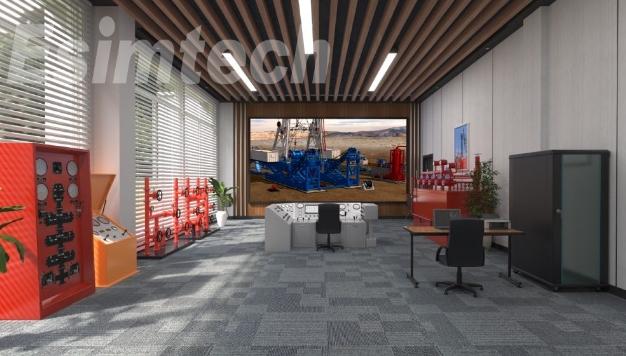A Technical Breakdown: Animating the Key Stages of Land Rig Installation

Have you ever wondered how those massive land rigs get assembled on remote drilling sites? The process is a complex dance of heavy machinery and skilled crews. Today, we'll take a deep dive into the world of 3D animation and explore how it can be used to visualize the key stages of land rig installation.
Why Animate Rig Installation?
There are several advantages to using animation for land rig installation:
Clarity and Visualization: A well-crafted animation can break down complex procedures into clear, easy-to-understand steps. This is especially helpful for training purposes, where crews need to visualize the process before tackling it in the field.
Safety Planning: Animations can be used to identify potential safety hazards during installation. By simulating the process virtually, engineers and safety professionals can proactively address risks and develop safer procedures.
Communication and Marketing: Animation is a powerful tool for communicating complex technical processes to a wider audience. This can be beneficial for investor presentations, client briefings, or even public outreach campaigns related to oil and gas exploration.
Breakdown: The Animation Process
Here's a simplified breakdown of how an animation for land rig installation might be created:
Data Collection: The first step involves gathering detailed information about the specific rig model and the planned installation site. This might include technical specifications, equipment manuals, and even on-site photographs or video footage.
3D Modeling: The animation team creates 3D models of the individual rig components, such as the derrick, drawworks, mud pumps, and crew vehicles. The environment surrounding the installation site is also modeled to provide context.
Animation & Rigging: The 3D models are then "rigged" to allow for controlled movement and animation. This involves defining virtual joints, pivots, and other controls that will allow the animators to manipulate the models realistically.
Animation & Storytelling: The animators bring the scene to life by creating keyframes that define the movement of each component during the installation process. Techniques like camera placement, lighting, and sound effects are used to enhance the animation's clarity and storytelling impact.
Rendering & Finalization: The final step involves rendering the animation into a high-quality video format. This might involve adding text overlays, voice narration, or music to further enhance the viewer's experience.
The Future of Animated Rig Installations
The use of animation in the oil and gas industry is constantly evolving. With advancements in virtual reality (VR) technology, it's possible to envision future training programs that utilize VR simulations to provide crews with an even more immersive and interactive experience of the land rig installation process.
By leveraging the power of 3D animation, the oil and gas industry can improve safety, communication, and overall efficiency in the crucial process of land rig installation.
- Art
- Causes
- Crafts
- Dance
- Drinks
- Film
- Fitness
- Food
- Jocuri
- Gardening
- Health
- Home
- Literature
- Music
- Networking
- Alte
- Party
- Religion
- Shopping
- Sports
- Theater
- Wellness
- IT, Cloud, Software and Technology


